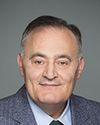I'll answer that question.
First, I will put annex 13 to the Convention on International Civil Aviation of the International Civil Aviation Organization, or ICAO, into context. It is this annex that governs international investigations of aviation accidents and incidents. It includes very clear roles and responsibilities.
For example, in theory, the country where the accident takes place should be responsible for the investigation. Second, the countries that make up the investigation team, i.e. those that will actively conduct the accident investigation, are the State of Registry or State of the Operator of the aircraft, the state where the aircraft was designed and built, and the state where the engines were designed and built. These countries play a very active role in the investigation.
In the case of the Lion Air accident, Canada does not meet any of these criteria. The case of the Ethiopian Airlines flight is different. The annex I was talking about states that when citizens of a country are on board an aircraft involved in an accident, that country has expert status. However, this status is very limited. In fact, it allows them to visit the scene of the accident, to receive factual information that is ready to be publicly disclosed by the state responsible for the investigation, and finally, to receive a copy of the final report of the investigation. This is what annex 13 allows in such cases.
So, in the case of Lion Air, we have no status, and in the case of Ethiopian Airlines, we have expert status. That being said—




